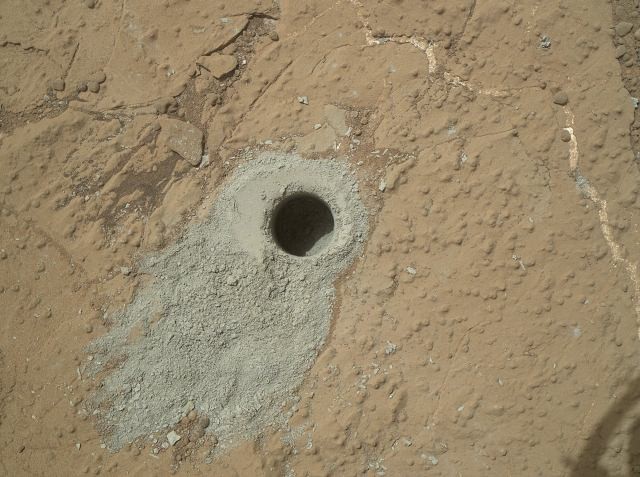The so-called Red Planet is only reddish on the surface layer based on a recent photo sent by NASA's Mars Curiosity rover.
The Curiosity rover, which is in the process of drilling and collecting Martian soil, recently sent Earth a photo showing some Martian blue-gray feature.
The recent Mars photo shows the contrast of reddish Martian surface layer and the planet's blue-gray shade beneath the surface. The soil underneath the Martian grounds is less oxidized, hence less reddish, according to NASA.
A report on weather.com shows a Martian photo that "simulates what humans would see" in terms of how the rocky, iron-rich Mars looks like. This sample shows a somewhat reddish ground surface.
Mars looks red to the naked eye because "a lot of rocks on Mars are full of iron, and when they're exposed to the great outdoors, they 'oxidize' and turn reddish - the same way an old bike left out in the yard gets all rusty," NASA explained.
Schoolkids are taught that Mars is a red planet. Ancient Egyptians also named Mars the "Red One." The planet's photos, however, show different shades depending on camera filters and elements present in the environment. The true color of Mars remains generally reddish as far as its surface is concerned.
"Getting the colors right is not an exact science," Jim Bell, Professor of Astronomy at Cornell is quoted as saying in this old NASA document which explains how astronomical images were taken over a decade ago.
In this NASA Web page is a Curiosity rover photo, "in raw color, as recorded directly by the camera, and has not been white-balanced." Scientists are expected to study the composition of the powdered Martian soil.



























